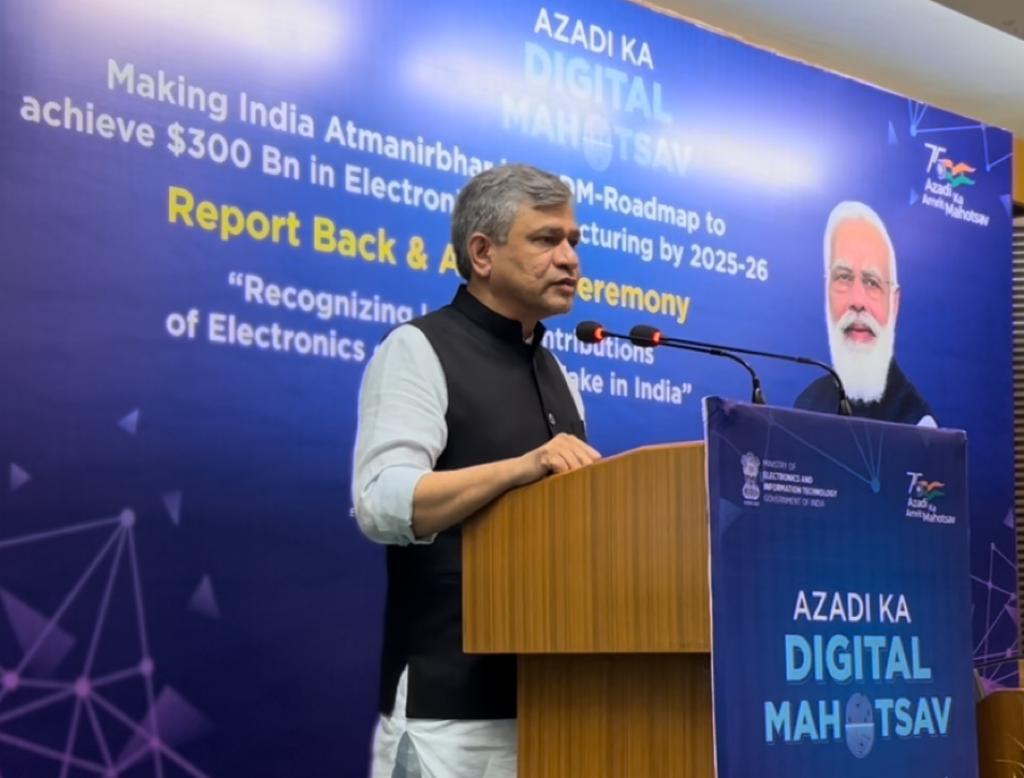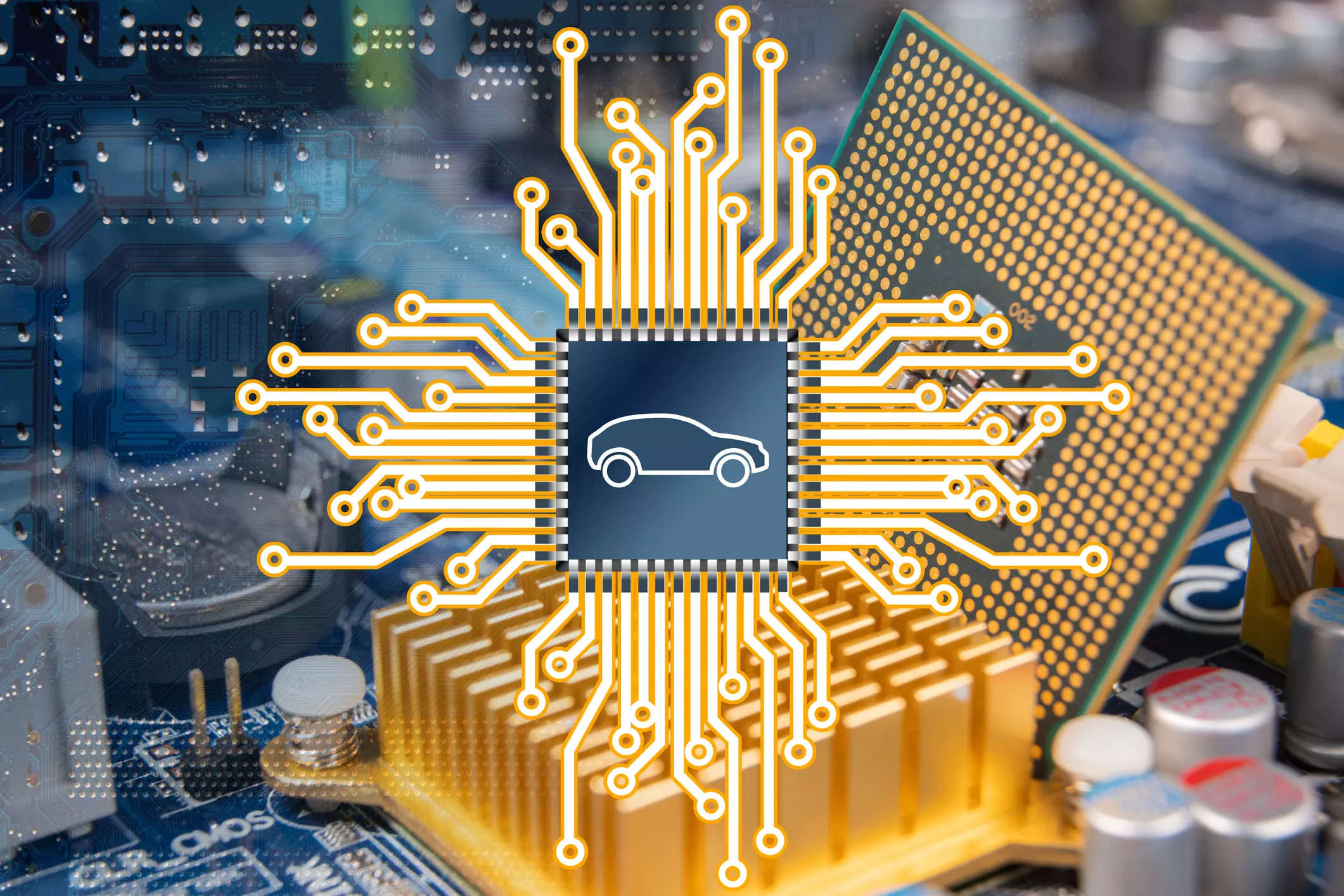India to turn hub for chip fab, design in five years: Vaishnaw

India to turn hub for chip fab, design in five years: Vaishnaw
India is poised to become a prominent hub for the design and manufacturing of semiconductors over the coming five years. This assertion comes from Ashwini Vaishnaw, the Union Minister for Electronics and Information Technology, who shared his perspective during a virtual session that marked the commencement of the 21st edition of the Hindustan Times Leadership Summit.
The prospect of India emerging as a semiconductor hub signifies the nation’s ambitions to play a pivotal role in the global technology industry. Semiconductors are fundamental components of modern electronics, and their design and production are central to various high-tech applications, from consumer electronics to advanced industrial systems.
This vision aligns with India’s broader goals in technology and electronics, highlighting its determination to foster innovation, attract investment, and strengthen its position as a global technology leader. Establishing semiconductor capabilities can also contribute significantly to the country’s economic growth and job creation.
As India seeks to position itself at the forefront of semiconductor design and manufacturing, it underscores the nation’s commitment to technological advancement and its readiness to leverage its skilled workforce and resources to shape the future of the semiconductor industry. This strategic move can potentially have far-reaching implications for India’s technological landscape and global competitiveness.
Ashwini Vaishnaw, the Union Minister for Electronics and Information Technology, has highlighted three key core strengths that are expected to drive India’s growth in the semiconductor sector:
- Skilled Workforce: India has a vast pool of highly skilled and technically proficient professionals in the fields of engineering, electronics, and information technology. This skilled workforce is a valuable asset that can contribute to semiconductor design, research, and development.
- Market Potential: India boasts a rapidly growing market for electronic devices and technology products. With a large and expanding middle-class population, there is a substantial domestic demand for semiconductors and electronics. This burgeoning market can serve as a strong incentive for semiconductor companies to establish a presence in India.
- Government Support: The Indian government has been actively promoting the electronics and semiconductor manufacturing sector through various initiatives and policies. These efforts include financial incentives, tax benefits, and regulatory reforms aimed at attracting investment and fostering indigenous semiconductor production.
These core strengths position India favorably in its pursuit of becoming a prominent player in the semiconductor industry. By leveraging its skilled workforce, tapping into its domestic market potential, and receiving government support, India aims to carve out a significant role in the global semiconductor value chain, driving technological innovation and economic growth in the process.
Ashwini Vaishnaw, the Union Minister for Electronics and Information Technology, has identified three major strengths that position India favorably to become a significant player in both the design and manufacturing of semiconductor chips:
- Design Capability: India boasts a strong and growing design ecosystem. The country has a talented workforce proficient in chip design, hardware development, and software programming. This design capability is a crucial element in the semiconductor industry, as it drives innovation and the creation of cutting-edge semiconductor products.
- Clean and Green Power: India has made significant strides in promoting clean and sustainable energy sources. The availability of clean power, such as renewable energy options like solar and wind, reduces the environmental footprint of semiconductor manufacturing. This emphasis on green power aligns with global sustainability goals and makes India an attractive destination for semiconductor production.
- Expertise in Handling Complex Liquids and Chemicals: The semiconductor manufacturing process involves intricate procedures that require the precise handling of various liquids and chemicals. India’s proficiency in managing these complex processes is a substantial advantage. This expertise ensures that semiconductor production can be carried out with precision and efficiency.
By emphasizing these three strengths—design capabilities, clean power infrastructure, and expertise in handling intricate processes—India is positioning itself as a competitive player in the semiconductor industry. These advantages not only support the development of semiconductor design but also facilitate environmentally responsible and efficient semiconductor manufacturing, contributing to India’s potential to become a significant semiconductor hub on the global stage.
Ashwini Vaishnaw, the Union Minister for Electronics and Information Technology, shared several significant insights and initiatives related to India’s semiconductor and technology sectors:
- Growth of the Global Semiconductor Market: Vaishnaw anticipates that the global semiconductor market will double in value over the next 6-7 years, reaching a staggering trillion-dollar valuation. This projection underscores the immense growth potential in the semiconductor industry, which India aims to tap into.
- Skill Development: The minister unveiled plans to skill 80,000 individuals with the necessary expertise to bolster India’s position in the semiconductor ecosystem. This initiative reflects the government’s commitment to building a robust talent pool capable of contributing to the semiconductor industry’s expansion.
- Establishment of Fab Facilities: India is on the path to establishing at least two large fabrication facilities (fabs) that will provide state-of-the-art technology for the nation’s economy. These fabs will play a pivotal role in domestic semiconductor manufacturing, supporting India’s drive to become more self-reliant in this critical sector.
- Development of Semiconductor Ecosystem: Vaishnaw highlighted the construction of a facility by US-based Micron as an example of the rapid growth and development of India’s semiconductor ecosystem. Such investments by global players signal India’s attractiveness as a destination for semiconductor manufacturing.
- Homegrown Telecom Technology: India has developed its 4G and 5G technology stack, which is set to be launched around Diwali, a significant Indian festival. The development of indigenous telecom technology underscores India’s capabilities in the telecommunications sector and aligns with the government’s vision for self-reliance in technology.
- Export of Telecom Technology: Vaishnaw expressed the expectation that India will become an exporter of telecom technology by the next Diwali. India’s already-established export of technology equipment to 70 countries signifies the country’s growing influence and competitiveness in the global technology arena.
These initiatives and expectations outlined by the Union Minister reflect India’s ambitious goals to play a pivotal role in the semiconductor and technology sectors. They underscore India’s determination to leverage its talent, develop domestic capabilities, and contribute significantly to the rapidly evolving global technology landscape.
Ashwini Vaishnaw, who serves as both the Union Minister for Electronics and Information Technology and the Railway Minister, highlighted the remarkable transformation that the Indian telecom sector has undergone in the past decade. He emphasized the following points:
- Resilience of the Telecom Sector: Vaishnaw noted that a decade ago, the Indian telecom industry faced significant challenges, including financial losses and ongoing litigation. The sector was perceived as high-risk and unattractive. However, through concerted efforts and reforms, the industry has undergone a remarkable turnaround.
- Telecom as a Sunrise Industry: The minister emphasized that the telecom sector has evolved into a “sunrise industry” in India. This transformation reflects the industry’s resurgence and newfound attractiveness for investors and stakeholders. The telecom sector now plays a pivotal role in India’s digital transformation and economic growth.
- High-Speed Railway Networks: Vaishnaw highlighted the importance of high-speed railway networks in shaping India’s economy. He drew parallels with countries like Japan, where efficient high-speed rail systems have had a significant multiplier effect on economic development.
- Connecting Vibrant Economies: The minister cited the example of the Mumbai-Ahmedabad high-speed corridor and future similar projects. By connecting major economic hubs like Mumbai, Thane, Vapi, Baroda, Ahmedabad, Surat, and Anand, these corridors create a unified and expansive economic zone. This interconnectedness fosters economic growth, trade, and investment across the region.
Vaishnaw’s remarks underscore the pivotal role that both the telecom sector and high-speed railway networks play in shaping India’s economic landscape. They reflect the government’s commitment to revitalizing and modernizing critical infrastructure sectors to drive sustainable economic development and enhance India’s global competitiveness.
Ashwini Vaishnaw, the Union Minister for Electronics and Information Technology and Railway Minister, revealed several significant initiatives and strategies aimed at enhancing India’s railway system and promoting sustainability:
- Refurbishing Old Coaches: The Indian Railways is introducing a novel concept of refurbishing old coaches to enable them to run at higher speeds, provide greater passenger comfort, and extend their operational lifespan to the full 35 years. This approach represents a sustainable and cost-effective solution that maximizes the utility of existing assets and reduces waste.
- Modal Shift to Rail: The minister outlined plans to shift a substantial portion of cargo, amounting to at least 3,000 million tons, from road transport to railways. This strategic move aims to reduce the heavy reliance on trucks for freight transportation. By diverting cargo to rail, India not only promotes more energy-efficient and environmentally friendly modes of transportation but also reduces its dependence on diesel imports, especially from the Middle East.
- Energy Independence: Vaishnaw highlighted the broader strategic goal of reducing energy consumption and achieving energy independence by shifting a significant portion of cargo transportation to railways. This transition aligns with sustainability objectives, as railways are generally more energy-efficient than road transport. It also contributes to India’s goal of reducing its carbon footprint and promoting a more sustainable energy landscape.

These initiatives underscore India’s commitment to modernizing its railway system, optimizing the use of resources, and pursuing sustainable transportation solutions. They reflect a holistic approach that encompasses passenger comfort, environmental conservation, and energy independence as key priorities for the country’s railways.






